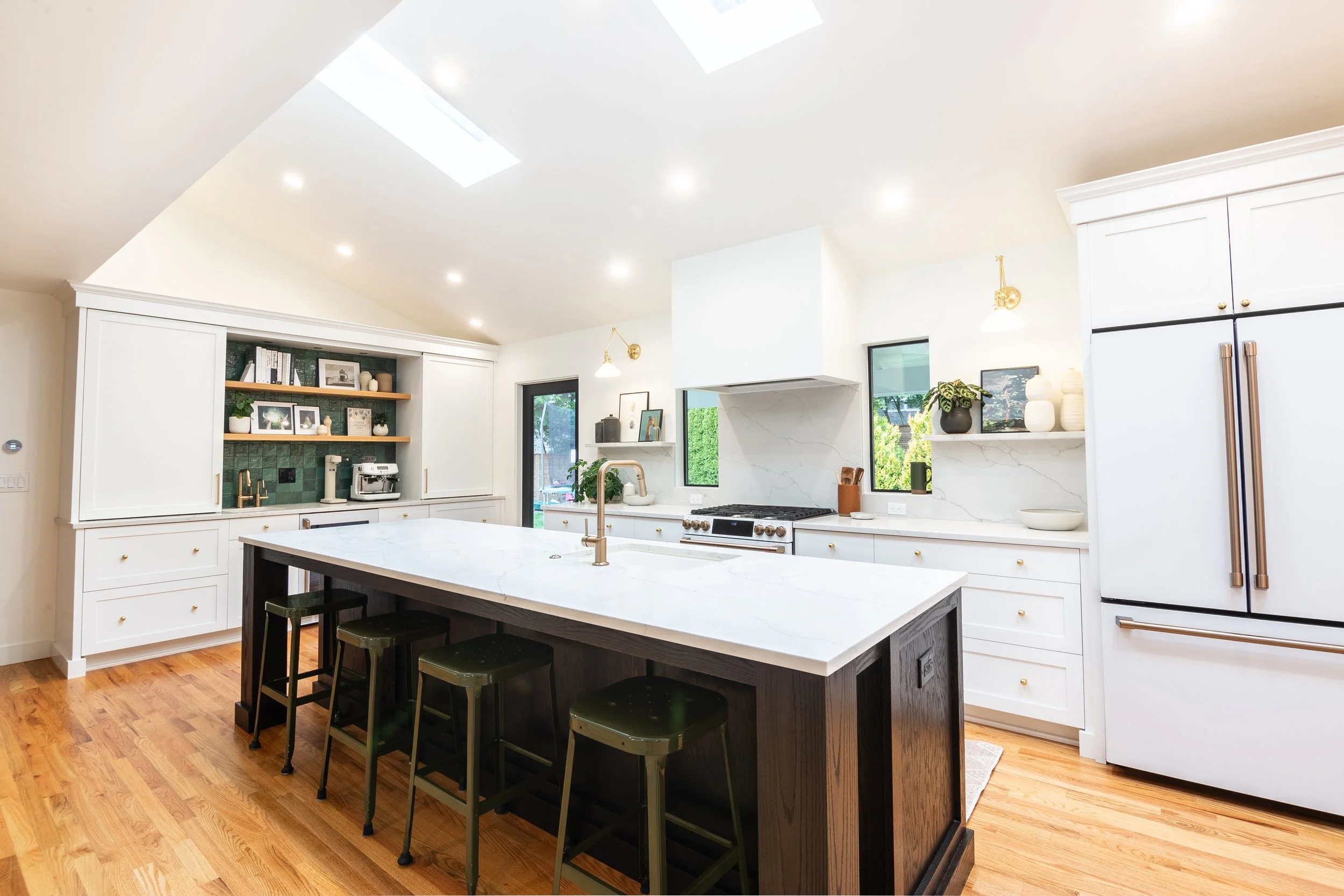Helpful Tips for Selecting the Perfect Range Hood
Choosing the right range hood for your kitchen involves balancing functionality, airflow, style, and your space. Here’s a practical guide to help you make a smart decision:
Understand Your Venting Needs (Ducted vs. Ductless)
Ducted (Vented): These hoods exhaust air outside your home. They offer the best performance for removing smoke, odor, grease, and heat.
Ductless (Recirculating): These use charcoal or other filters to clean the air, then recirculate it back into the kitchen. Easier to install, but generally less powerful.
Tip: If your kitchen design allows it, go with ducted for better air quality.
Match the Hood Size to Your Cooktop
Your range hood should be at least as wide as your stove, and ideally 3 inches wider on each side for better coverage.
Mounting height matters: typically 24–30” above the cooktop, depending on the model and manufacturer guidelines.
For island cooktops, you might want a wider hood depending on the setup.
Determine How Much Airflow (Power) You Need
Airflow is measured in CFM (cubic feet per minute) - how much air the hood can move.
For gas ranges, a rule of thumb is 1 CFM for every 100 BTUs of your cooktop.
The more you cook, the more CFM you’ll likely need.
Keep in mind: higher CFM often means more noise, so consider that trade-off.
Consider Noise Levels
Noise is often measured in sones (or sometimes decibels).
If you care about a quiet kitchen, look for hoods with “quiet mode” or lower sone rating.
The blower type and speed settings affect both performance and noise.
Choose the Right Style/Mounting
Wall-mounted (chimney) - mounted on a wall above the stove.
Under-cabinet - fits underneath kitchen cabinets, saving space.
Island hood - hangs from the ceiling over an island cooktop.
Insert/Built-in - hidden inside custom cabinetry or a custom hood structure.
Downdraft - rises from the countertop or cooktop and pulls air downward.
Choose a style that fits both your kitchen layout and aesthetic.
Installation Height and Clearance
Follow manufacturer specs for how high the hood should be mounted. Too low is a safety risk, too high reduces effectiveness.
Also consider your duct layout (if ducted): duct size, length, and number of bends all affect airflow requirements.
According to one guide, every foot of ductwork can increase the required CFM, and each turn adds to it too.
Choose Filters/Maintenance
Metal filters (baffle or mesh): durable, cleanable, and support higher airflow.
Charcoal filters (for ductless): filter odors, but need replacing, and airflow may be lower.
Think about maintenance: how easy is it to remove and clean or replace filters?
Energy Efficiency/Certifications
Check for certifications (like HVI) that verify performance.
Energy-efficient models may help with power consumption.
Budget & Labor Cost
The cost of range hoods varies widely depending on type and power.
Installation can include ductwork, electrical work, and labor, so budget for that.
Final Tips
Measure carefully before buying, both your cooktop width and available mounting space.
Talk to a professional contractor if you're unsure about ductwork or installation.
Think long term: a more powerful, quieter, and well-vented hood may cost more upfront but make your kitchen much more comfortable.
Maintenance matters: even a great hood won't work well if filters are clogged or not cleaned.



